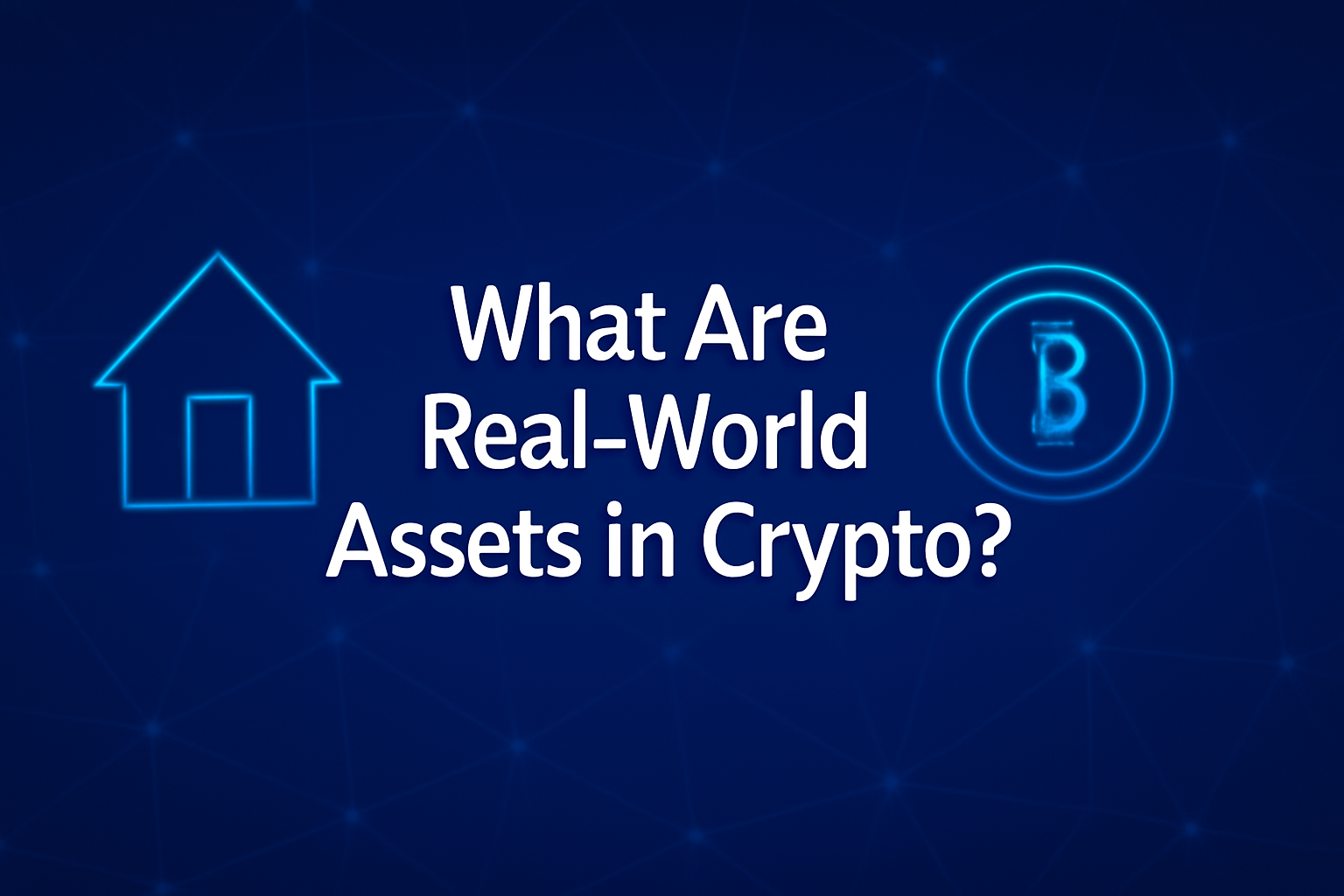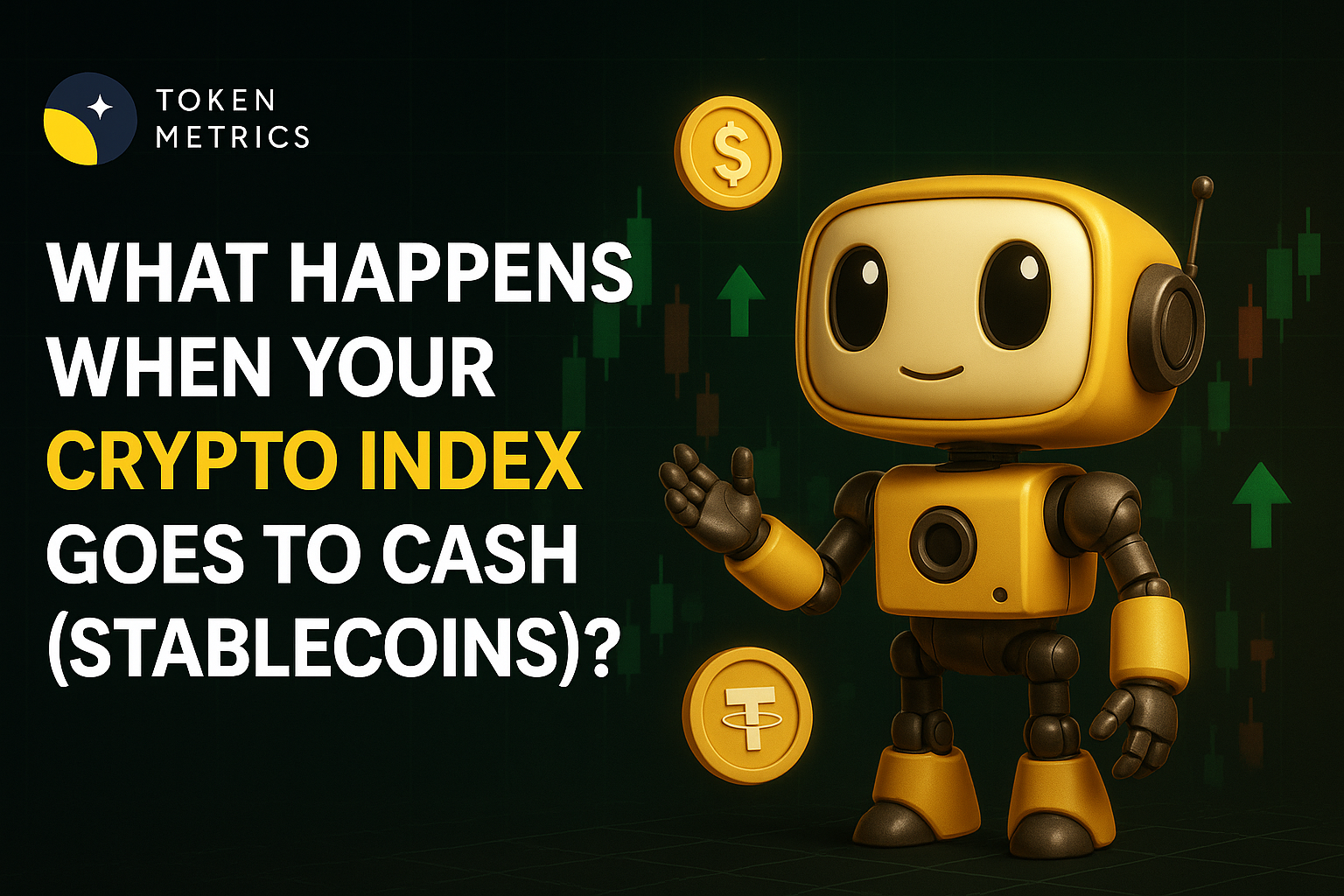
What Are Real-World Assets in Crypto? A Complete Guide

The cryptocurrency landscape is undergoing a revolutionary transformation as traditional finance converges with blockchain technology. At the forefront of this evolution are Real-World Assets (RWAs) – a groundbreaking innovation bridging the gap between physical assets and digital finance. As we navigate through 2025, understanding what are real world assets in crypto has become essential for investors, institutions, and anyone looking to capitalize on this trillion-dollar opportunity.
Understanding Real-World Assets (RWAs)
Real-World Assets in crypto refer to digital tokens that represent ownership or economic rights to tangible, physical assets or traditional financial instruments. Unlike conventional cryptocurrencies, which derive their value primarily from market speculation or utility within a digital ecosystem, RWA tokens are backed by concrete, verifiable assets existing in the real world. This intrinsic backing provides a level of stability and investor confidence that pure digital assets may lack.
In essence, RWAs are crypto tokens that represent physical assets such as bonds, real estate properties, commodities, machinery, and more. They serve as a bridge bringing traditional financial assets into the realm of decentralized finance (DeFi). Through the tokenization process, these often illiquid assets are transformed into tradeable digital tokens, enabling features like fractional ownership and global access. This innovation opens new doors for asset management, making high-value and previously inaccessible assets available to a broader range of investors.
Types of Real-World Assets Being Tokenized
The scope of real world asset tokenization is vast and continues to expand across various asset classes:
Financial Instruments
Government bonds, treasury bills, and corporate debt are increasingly being tokenized, merging traditional fixed-income investing with blockchain technology. For example, BlackRock’s BUIDL fund, launched in March 2024, commands a dominant 44% market share in tokenized treasuries. These financial assets offer stable yields and introduce a new dimension of financial innovation by making traditional assets accessible via digital tokens.
Real Estate
The real estate industry is one of the most active sectors embracing tokenization. Platforms like Propy and RealT facilitate tokenized real estate investment, allowing investors to acquire fractional ownership in commercial and residential properties. This approach democratizes access to valuable assets that were traditionally out of reach for retail investors, enabling them to benefit from rental income and property appreciation through onchain finance.
Commodities
Commodity-backed tokens, particularly those linked to precious metals like gold, constitute a significant portion of the RWA market. Tokens such as Tether Gold (XAUT) and PAX Gold (PAXG) represent approximately 84% of this sector, which has seen growth of 67.8% since 2024, reaching a market capitalization of $1.9 billion. These tokens provide a secure and liquid means of investing in tangible assets without the need for physical storage.
Art and Collectibles
High-value artworks, vintage wines, and collectibles are being tokenized to increase accessibility and liquidity. Blockchain verification ensures authenticity and provenance, allowing investors to own fractions of unique and intellectual property assets that were once difficult to trade.
Private Credit
Private credit protocols are emerging as a bridge between traditional lending and DeFi, providing loans to real-world businesses, especially in emerging markets. This sector leverages crypto capital to support business growth, offering new investment opportunities and enhancing financial inclusion.
The Technology Behind RWA Tokenization
The process of asset tokenization involves multiple critical steps to ensure security, compliance, and seamless integration with the digital ecosystem:
Asset Selection and Verification
Before tokenization, asset owners and asset issuers conduct thorough evaluations of the underlying asset. This includes legal due diligence to comply with local laws and regulatory compliance, valuation assessments, and verification of ownership. This rigorous process ensures that the tokenized assets represent valuable and legitimate physical or financial assets.
Smart Contract Development
Once the asset is selected, developers create smart contracts that define the token’s specifications. These contracts determine whether the token is fungible or non-fungible, select appropriate token standards (such as ERC20 or ERC721), and choose the blockchain platform best suited for the token’s purpose. Smart contracts automate ownership transfers, dividend distributions, and other functions, streamlining asset management and reducing counterparty risk.
Oracle Integration
A crucial component of RWA tokenization is integrating real world data with blockchain networks. Oracles like Chainlink securely bridge off-chain information to on-chain environments, ensuring that the digital tokens accurately reflect the status and value of the underlying assets. This integration allows tokenized real world assets to function effectively within decentralized finance ecosystems.
Market Growth and Institutional Adoption
The RWA sector has witnessed explosive growth, with overall market capitalization reaching unprecedented levels. By September 2025, top Real World Assets coins collectively boast a market cap of approximately $38.46 billion, driven largely by strong interest from institutional investors and financial institutions.
Forecasts suggest that by the end of 2025, the total value of RWAs on-chain (excluding stablecoins) could surpass $500 billion, with over $50 billion already tokenized. Prominent financial players are spearheading this movement:
- BlackRock introduced the BUIDL tokenized money market fund, pioneering tokenized treasury investments.
- Goldman Sachs and BNP Paribas have launched pilot projects on the Canton Network to explore tokenized asset offerings.
- Fidelity and VanEck announced plans for tokenized funds slated for 2025.
- HSBC debuted cross-border tokenized deposit products, enhancing global access.
This institutional adoption is a testament to the growing confidence in the digital asset ecosystem and the potential for RWAs to transform traditional finance.
Benefits of RWA Tokenization
The tokenization of real-world assets brings numerous advantages that revolutionize how investors interact with traditional and physical assets:
Enhanced Liquidity
Many traditionally illiquid assets such as real estate and private equity become tradeable 24/7 through tokenization. The ability to buy and sell fractions of assets on secondary markets eliminates lengthy settlement processes and unlocks liquidity pools that were previously inaccessible.
Fractional Ownership
Tokenization enables fractional ownership, allowing investors to purchase small portions of high-value assets. This lowers entry barriers and democratizes access to markets like real estate investment and government bonds, which have traditionally required substantial capital.
Global Accessibility
By leveraging blockchain technology, tokenized assets transcend geographic and regulatory boundaries. Investors worldwide gain global access to diverse asset classes, promoting financial inclusion and broadening the investor base.
Transparency and Security
Blockchain offers immutable records of ownership and transaction history, enhancing transparency in asset management. Coupled with robust security measures, this reduces fraud and increases investor confidence.
Cost Efficiency
Automated processes via smart contracts eliminate intermediaries, reducing transaction fees and administrative overhead. This streamlining leads to faster settlements and improved cost efficiency for both asset managers and investors.
Leveraging Token Metrics for RWA Trading Success
As the RWA market grows, navigating its complexities requires sophisticated tools and analytics. Token Metrics stands out as a premier crypto trading and analytics platform, empowering investors to make informed decisions in the evolving RWA landscape.
Token Metrics uses advanced AI-powered analytics to analyze market trends, token performance, and emerging investment opportunities across thousands of tokens, including those representing RWAs. Its features include:
- Real-time AI buy and sell signals that help spot winning tokens early.
- Deep-dive research tools that assess tokenomics, underlying asset quality, and growth potential.
- AI-curated portfolios optimized for short and long-term gains.
- Seamless trading integration with API connectivity, enabling users to execute trades based on AI insights.
For investors seeking to capitalize on the growth of RWAs, Token Metrics offers a comprehensive toolkit to enhance decision-making and portfolio management.
Current Challenges and Future Outlook
Despite the promising potential, real world assets rwas face several challenges that must be addressed for widespread adoption:
Regulatory Uncertainty
The legal status of tokenized RWAs remains ambiguous in many jurisdictions, as these tokens do not fit neatly into existing categories like commodities or securities. This regulatory uncertainty complicates compliance and investor protection efforts.
Standardization Issues
The lack of universal protocols for RWA tokens hampers interoperability across different blockchain platforms and ecosystems. Standardization is critical for seamless asset transfer and integration with traditional financial systems.
Security Risks
While blockchain offers enhanced security, the systems remain vulnerable to exploits and hacker attacks. Protecting digital tokens and ensuring the integrity of private blockchain networks are ongoing priorities.
Nevertheless, the outlook is optimistic. Regulatory clarity is expected to improve, with influential appointments such as Paul Atkins as SEC chair signaling a more defined legal framework. Continued innovation in digital technology and onchain finance will further streamline real world asset tokenization, making it more accessible and secure.
Leading RWA Platforms and Projects
Several pioneering projects are shaping the RWA ecosystem by providing infrastructure and innovative solutions:
- Ondo Finance (ONDO) specializes in tokenizing U.S. Treasuries and traditional financial products, offering institutional clients new avenues for fixed-income investing.
- Centrifuge (CFG) builds infrastructure that connects real-world assets to DeFi protocols, enabling asset owners to tokenize and finance their holdings.
- Maple Finance focuses on undercollateralized lending to institutions, bridging traditional finance and crypto capital.
- TrueFi provides uncollateralized lending protocols aimed at real-world businesses, supporting growth through decentralized credit.
Projects like Ondo, VeChain, and Chromia are recognized as some of the best RWA tokens for diversified portfolios. VeChain, in particular, leverages its experience with mainstream firms to enhance data management and tokenization processes, reinforcing the ecosystem’s robustness.
Conclusion
Real-World Assets represent a paradigm shift in ownership, investment, and financial markets. By converting tangible assets and traditional assets into digital tokens, the financial industry is moving towards a more inclusive, efficient, and transparent system that benefits both retail and institutional investors.
The era of real world asset tokenization is no longer a distant vision but a present reality, with 2025 marking a pivotal year in narrowing the divide between crypto-native communities and traditional finance. For investors eager to harness this revolutionary trend, platforms like Token Metrics provide the essential tools and insights needed to navigate the complex RWA landscape successfully.
Ultimately, the convergence of blockchain technology and traditional financial assets is not just changing how we invest—it is redefining the very nature of asset ownership and participation in the digital economy. Embracing this digital transformation unlocks unparalleled opportunities for financial inclusion, cost efficiency, and enhanced liquidity in the global financial system.

.svg)

Create Your Free Token Metrics Account

.png)




%201.svg)
%201.svg)


%201.svg)









.svg)




.png)